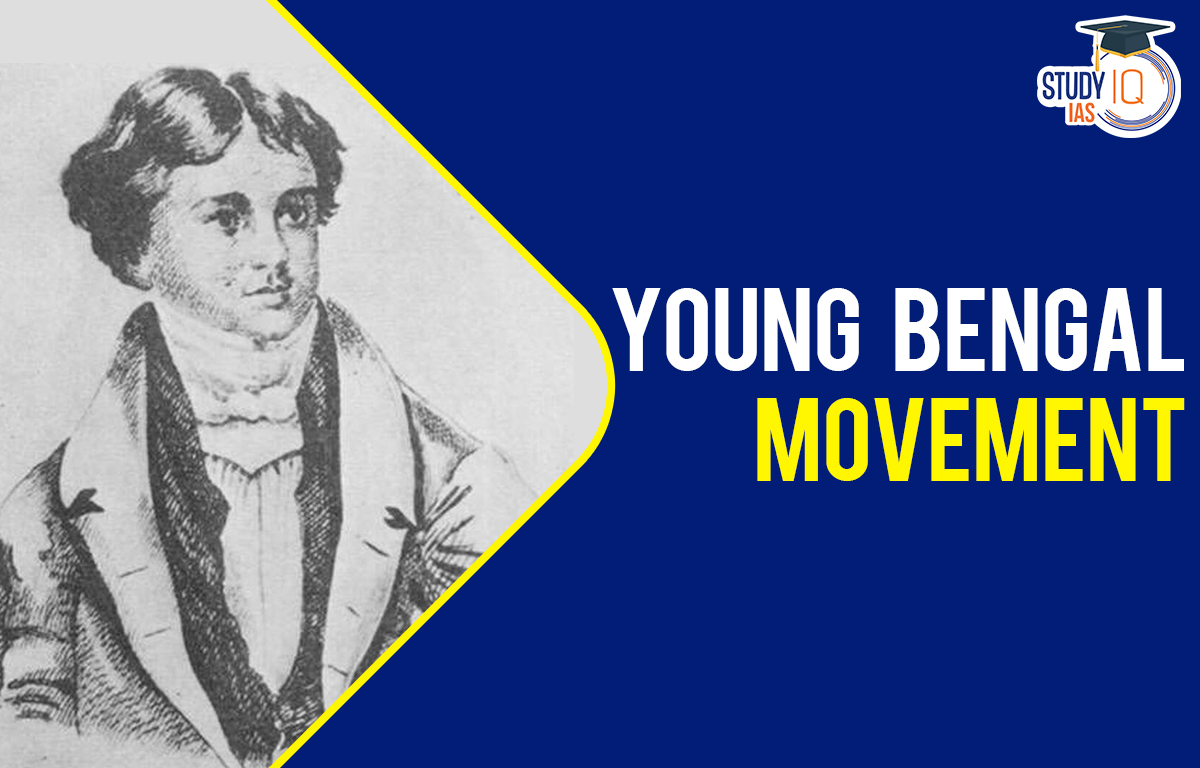Table of Contents
Young Bengal Movement
Read all about Young Bengal Movement. A radical thinker, Henry Louis Vivian Derozio exhorted his students to question everything they were told. His disciples, known as Derozians, battled against convention and tradition, demanded women’s education, and fought for the right to free speech and thought. The movement known as Young Bengal was started by Henry. Henry Vivian Derozio had a significant impact on this movement in the late 1820s and early 1830s. He taught at Hindu College in Calcutta from 1826 to 1831, during which time he was influenced by the principles of the French Revolution. This article has all the details about Young Bengal Movement for UPSC Exam Preparations.
Read about: Partition of Bengal
Young Bengal Movement Founder
Young Bengal Movement was founded by Henry Louis Vivian Derozio. He was the movement’s creator and founder-leader. Derozio insisted on his pupils exercising free thought and challenging all forms of authority. Derozio promoted radical values and organized conversations and debates on literature, history, philosophy, and science. With these efforts, Derozio essentially seduced the young Calcutta students, sparking an intellectual revolution among them.
He actively promoted reason, liberty, equality, and freedom, and he exhorted his students to do the same. Due to his divisive views, he was expelled from the college and passed away in 1831 from cholera.
Henry Louis Vivian Derozio, the founder of the Young Bengal movement, is known for his ideas and teachings. organised a group for debates and discussions on topics including history, science, literature, and philosophy to further radical ideals through his teachings.
Read about: Bengal Province
Young Bengal Movement Objective
Through debates and discussions on literature, history, philosophy, and science, they hoped to spread radical ideas. Derozio’s main mission was to inspire intellectual revolution among its young students. He was a great advocate for liberal thought. His mission was to encourage women’s education and put an end to social ills like child marriage, child labour, Sati practise, etc. spreading ideas from the French Revolution, such as equality, liberty, and fraternity. They aimed to encourage value-based and rational thinking rather than rote learning by using scientifically informed knowledge.
Read More: Reformist Movements & Revivalist Movements
Young Bengal Movement Impact
Derozio’s ideas on the acceptance of the rational spirit were accepted in part as long as they were not in conflict with fundamental Christian doctrines and as long as they criticized orthodox Hinduism. Derozio’s ideas had a significant impact on the social movement that became known as the Bengal Renaissance in early 19th century Bengal. Despite being perceived as something of an iconoclast by others like Alexander Duff and other (largely evangelical) Christian Missionaries.
Through newspapers, pamphlets, and community organisations, Derozians continued Raja Rammohan’s practice of educating the populace on social, economic, and political issues. They continued their public protests on issues including the need for the Company’s Charter to be revised, press freedom, better treatment of Indian laborers in British colonies abroad, and jury trials. Defending the riots from repressive zamindars and hiring Indians for higher-level government positions.
Though Derozlo was an agnostic, many people believe that his beliefs helped convert several upper caste Hindus, such Krishna Mohan Banerjee and Lal Behari Dey, to Christianity. Like Madhusudan Datta (another talented student of the college who abandoned his native religion in 1843) and Jnanendra Mohan Tagore, Christianity claimed many other converts (the only son of Prasanna Kumar Tagore). Drinking, which the Derozians had introduced as a sign of liberty, started to spread alarmingly among those who had not yet experienced the higher manifestations of Derozian free thought. Perhaps the first nationalist poet of Modern India was Derozio. To India – My Native Land is his most well-known poem.
Read More: Socio-Religious Reform Movement
Young Bengal Movement UPSC
In the age of Social reforms in our country Young Bengal Movement was one of the important events that took place in India. This article has all the information related to Young Bengal Movement for Preparations of UPSC Examinations.


 Nagari Pracharini Sabha Revival: Backgro...
Nagari Pracharini Sabha Revival: Backgro...
 Ryotwari System in India, Features, Impa...
Ryotwari System in India, Features, Impa...
 Battle of Plassey, History, Causes, Impa...
Battle of Plassey, History, Causes, Impa...





















